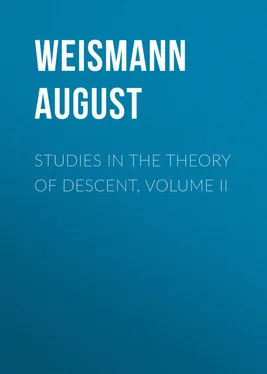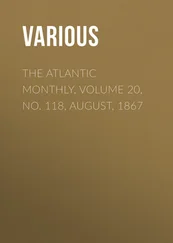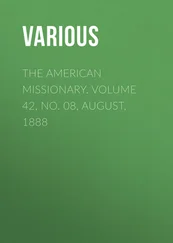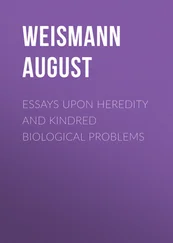August Weismann - Studies in the Theory of Descent, Volume II
Здесь есть возможность читать онлайн «August Weismann - Studies in the Theory of Descent, Volume II» — ознакомительный отрывок электронной книги совершенно бесплатно, а после прочтения отрывка купить полную версию. В некоторых случаях можно слушать аудио, скачать через торрент в формате fb2 и присутствует краткое содержание. Жанр: foreign_antique, foreign_prose, на английском языке. Описание произведения, (предисловие) а так же отзывы посетителей доступны на портале библиотеки ЛибКат.
- Название:Studies in the Theory of Descent, Volume II
- Автор:
- Жанр:
- Год:неизвестен
- ISBN:нет данных
- Рейтинг книги:4 / 5. Голосов: 1
-
Избранное:Добавить в избранное
- Отзывы:
-
Ваша оценка:
- 80
- 1
- 2
- 3
- 4
- 5
Studies in the Theory of Descent, Volume II: краткое содержание, описание и аннотация
Предлагаем к чтению аннотацию, описание, краткое содержание или предисловие (зависит от того, что написал сам автор книги «Studies in the Theory of Descent, Volume II»). Если вы не нашли необходимую информацию о книге — напишите в комментариях, мы постараемся отыскать её.
Studies in the Theory of Descent, Volume II — читать онлайн ознакомительный отрывок
Ниже представлен текст книги, разбитый по страницам. Система сохранения места последней прочитанной страницы, позволяет с удобством читать онлайн бесплатно книгу «Studies in the Theory of Descent, Volume II», без необходимости каждый раз заново искать на чём Вы остановились. Поставьте закладку, и сможете в любой момент перейти на страницу, на которой закончили чтение.
Интервал:
Закладка:
All these cases show a complete congruence in the two kinds of form-relationship; but exceptions are not wanting. Thus, the family Bombycidæ would certainly never have been formed if the larval structure only had been taken into consideration, since, whilst the genera Gastropacha , Clisiocampa , Lasiocampa , Odonestis , and their allies, are thickly covered with short silky hairs disposed in a very characteristic manner, the caterpillars of the genus Bombyx , to which the common silkworm, B. Mori , belongs, are quite naked and similar to many Sphinx-caterpillars ( Chærocampa ). Are the imagines of the genera united under this family, at any rate morphologically, as unequally related as their larvæ? Whether it is correct to combine them into one family is a question that does not belong here; we are now only concerned with the fact that the two stages are related in form in very different degrees.
An especially striking case of incongruence is offered by the family Notodontidæ , under which Boisduval, depending only on imaginal characters, united genera of which the larvæ differed to a very great extent. In O. Wilde’s work on caterpillars this family is on this account quite correctly characterized as follows: – “Larvæ of various forms, naked or with thin hairs, sixteen or fourteen legs.” 15 15 [The following characters are given in Stainton’s “Manual of British Butterflies and Moths,” vol. i. p. 114: – “Larva of very variable form: at one extreme we find the singular Cerura larvæ, with only fourteen legs, and two long projecting tails from the last segment; at the other extreme we have larvæ with sixteen legs and no peculiarity of form, such as Chaonia and Bucephala ; most have, however, the peculiarity of holding the hind segment of the body erect when in repose; generally quite naked, though downy in Bucephala and rather hairy in Curtulu ; very frequently there are projections on the back of the twelfth segment.” R.M.]
In fact in the whole order Lepidoptera there can scarcely be found associated together such diverse larvæ as are here placed in one imago-family; on one side the short cylindrical caterpillars of the genus Cnethocampa , Steph. ( C. Processionea , Pithyocampa , &c.), which are covered with fine, brittle, hooked hairs, and are very similar to the larvæ of Gastropacha with which they were formerly united; and on the other side there are the naked, humped, and flat-headed larvæ of the genus Harpyia , Ochs., with their two long forked appendages replacing the hindmost pair of legs, and the grotesquely formed caterpillars of the genera Stauropus , Germ., Hybocampa , Linn., and Notodonta , Ochs.
The morphological congruence between larvæ and imagines declares itself most sharply in genera, where it is the rule almost without exception. In this case we can indeed be sure that a genus or sub-genus founded on the imagines only will, in accordance with correct principles, present a corresponding difference in the larvæ. Had the latter been known first we should have been led to construct the same genera as those which are now established on the structure of the imagines, and these, through other circumstances, would have stood in the same degree of morphological relationship as the genera founded on the imagines. There is therefore a congruence in a double sense; in the first place the differences between the larvæ and imagines of any two genera are equally great, and, in the next place, the common characters possessed by these two stages combined cause them to form precisely the same groups defined with equal sharpness; the genera coincide completely.
So also the butterflies of the sub-family Nymphalinæ can well be separated into genera by the characters of the larvæ, and these, as far as I am able to judge, would agree with the genera founded on the imagines.
The genus Melitæa , for example, can be characterized by the possession of 7–9 fleshy tubercles bearing hairy spines; the genus Argynnis may be distinguished by always having six hairy unbranched spines on each segment, and the genus Cethosia by two similar spines on each segment; the genus Vanessa shows sometimes as many as seven branched spines; and the genus Limenitis never more than two branched blunt spines on each segment, and so forth. If we go further into details it will be seen that the most closely related imagines, as might indeed have been expected, likewise possess the most nearly allied larvæ, whilst very small differences between the imagines are also generally represented by corresponding differences in the larvæ. Thus, for instance, the genus Vanessa of Fabricius has been divided into several genera by later authors. Of these sub-genera, Grapta , Doubl. (containing the European C. – album , the American Fabricii , Interrogationis , Faunus , Comma , &c.), is distinguished by the fact that the larvæ not only possess branched spines on all the segments with the exception of the prothorax, but these spines are also present on the head; in the genus Vanessa ( sensû strictiori ), Doubl., the head and prothorax are spineless ( e. g. V. Urticæ ); in the tropical genus Junonia , Hübn., which was also formerly (Godart, 1819 16 16 Encyl. Meth. ix. p. 310.
) united with Vanessa , the larvæ bear branched spines on all the segments, the head and prothorax included.
It is possible to go still further and to separate two species of Vanessa as two new genera, although they have hitherto been preserved from this fate even by the systematists most given to “splitting.” This decision is certainly justifiable, simply because these species at present stand quite alone, and the practical necessity of forming a distinct genus does not make itself felt, and this practical necessity moreover frequently comes into conflict with scientific claims: science erects a new genus based on the amount of morphological difference, it being quite immaterial whether one or many species make up this genus; such an excessive subdivision is, however, a hindrance to practical requirements, as the cumbrous array of names thereby becomes still further augmented.
The two species which I might separate from Vanessa on the ground of their greater divergence, are the very common and widely distributed V. Io and Antiopa , the Peacock Butterfly and the Camberwell Beauty. In the very remarkable pattern of their wings, both show most marked characteristics; Io possesses a large ocellus on each wing, and Antiopa has a broad light yellow border which is not found in any other species of Vanessa . There can be no doubt but that each of these would have been long ago raised into a genus if similarly marked species of Vanessa occurred in other parts of the world, as is the case with the other species of the genus. Thus, it is well known that there is a whole series of species resembling our V. Cardui , and another series resembling our V. C. – album , the two series possessing the same respective types of marking; indeed on these grounds the sub-genera Pyrameis and Grapta have been erected. 17 17 [The genus Vanessa (in the wide sense) appears to be in a remarkable condition of what may be called phyletic preservation. Thus, the group of species allied to V. C. – album passes by almost insensible steps into the group of butterflies typified by our “Tortoiseshells.” The following is a list of some of the intermediate species in their transitional order: — I. – album , V. – album , Faunus , Comma , California , Dryas , Polychloros , Xanthomelas , Cashmirensis , Urticæ , Milberti , &c. Similarly, our Atalanta and Cardui are connected by a number of intermediate forms, showing a complete transition from the one to the other. The following is the order of the species so far as I am acquainted with them: — Atalanta , Dejeanii , Callirhoë , Tammeamea , Myrinna , Huntera , Terpsichore , Carye , Kershawii , and Cardui . R.M.]
Интервал:
Закладка:
Похожие книги на «Studies in the Theory of Descent, Volume II»
Представляем Вашему вниманию похожие книги на «Studies in the Theory of Descent, Volume II» списком для выбора. Мы отобрали схожую по названию и смыслу литературу в надежде предоставить читателям больше вариантов отыскать новые, интересные, ещё непрочитанные произведения.
Обсуждение, отзывы о книге «Studies in the Theory of Descent, Volume II» и просто собственные мнения читателей. Оставьте ваши комментарии, напишите, что Вы думаете о произведении, его смысле или главных героях. Укажите что конкретно понравилось, а что нет, и почему Вы так считаете.












